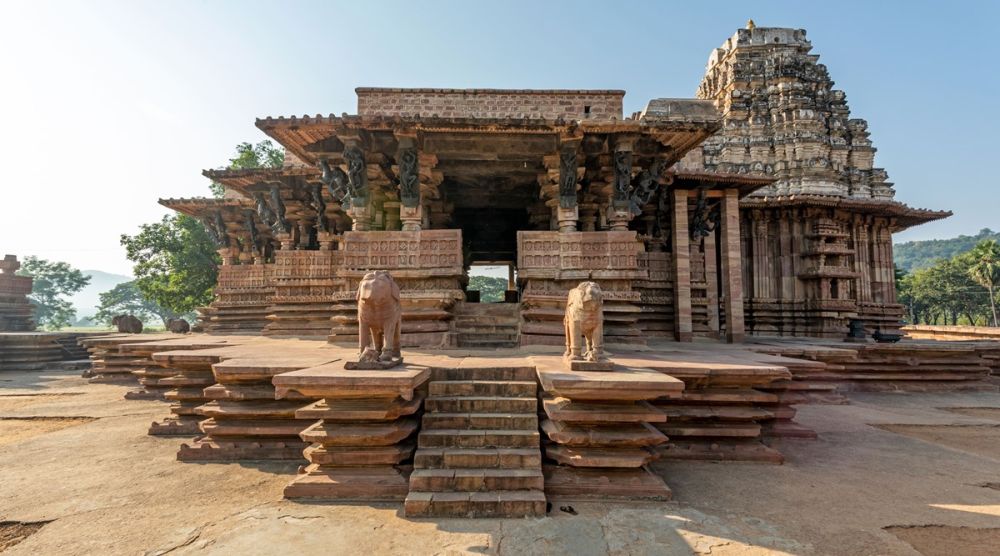

The Ramappa Temple, also known as the Rudreshwara Temple, is a historical testament located in Warangal, Telangana, India. This temple has been standing since the 13th century, having been constructed in 1213 AD by General Recherla Rudra, during the reign of the Kakatiya ruler Ganapatideva. The temple is named after the sculptor Ramappa, who took an unprecedented 40 years to build it, showcasing the immense dedication and intricacy involved in its creation.
The architecture of the temple is reflective of the Kakatiyan style, with intricate carvings and a unique star-shaped platform. It is famous for its floating bricks, which are so light that they can float on water. The main deity worshiped here is Lord Shiva, represented by the Ramalingeswara Swamy. The temple's rich cultural history has been a significant draw for both local and international tourists and historians alike, making it not just a religious site but also a heritage landmark.
Tourism in the region has been bolstered by the temple's status as an emblem of Indian ancient heritage. Initially attracting local pilgrims and curious travellers, the temple has gradually become a highlight for those exploring the southern part of India. As knowledge of this hidden gem spread, more tourists from around the globe began to visit, gaining a real sense of the ancient Indian craftsmanship and spirituality.
In the past few decades, concerted efforts have been made to promote the site as a tourism hotspot. The state tourism department, along with the Archaeological Survey of India (ASI), has worked towards preserving and promoting the temple as an essential cultural and historical site. Its inclusion in travel itineraries and the development of tourist facilities around the area have further encouraged visitor numbers.
In recent years, with the advent of social media and increased global connectivity, the Ramappa Temple has seen a surge in its popularity. The latest trend is the inclusion of the temple into UNESCO’s tentative list of world heritage sites, which has sparked even more interest among cultural enthusiasts and history buffs. It has been put into the limelight as one of the must-visit places, further enhancing tourism in Telangana.
Eco-friendly and sustainable tourism are also becoming popular trends in the area. Visitors are now being more conscious of their environmental footprint while exploring ancient sites like the Ramappa Temple. The Telangana government is also working towards developing the infrastructure in a way that supports sustainable tourism to preserve the temple for future generations.
As travel norms evolve post-pandemic, there has been a renewed interest in discovering lesser-known, open-air historical sites, which plays well for the Ramappa Temple. The tourism industry in Warangal has adapted by providing virtual tours and implementing safety measures to continue attracting visitors while ensuring their safety amidst global health concerns.
Note: As tourism at the Ramappa Temple continues to grow, visitors are encouraged to respect the site's historical significance and abide by preservation guidelines to maintain its integrity and splendor.